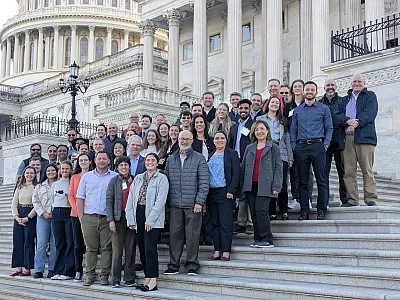Teaching agriculture students how to spot and identify weeds

When agriculture courses teach students how to spot weeds, they often require students to create weed collections. Through these exercises, students learn the names of the weeds, their scientific classification, and traits to look for when spotting them in the wild. They collect these specimens from various sites before pressing, drying, and gluing them to sheets of paper. Students have to identify and label every weed under its common and scientific name before adding the plant family, the location where they found it, and the date of collection. This gives them hands-on experiential learning that they can apply immediately to their work in the field.
A study published in Natural Sciences Education presented data collected from more than 18 years of student weed collections, taken from among 350 species of plants. Overall, 73% of species were correctly identified, showing some serious promise. Five species in particular were correctly identified 97% of the time—milkweed, velvetleaf, bird vetch (syn. tufted vetch), common purslane, and broadleaf plantain. The hardest ones to identify included autumn hawkbit, dwarf mallow, wormseed wallflower, cockspur grass (syn. barnyard grass), and horseweed. What makes a species easy or hard to identify often depends on physical features and how much it stands out from other kinds of weeds.

Value of hands-on learning
Studies suggest that doing these exercises with live specimens teaches students more than diagrams or photographs. It also familiarizes them with the flora in specific regions and aids their problem-solving skills. At the same time, instructors have worried that students will limit themselves to only collecting plants in the field guide, or that the season in which the studies take place will affect what kind of plants students focus on and remember the most. They have also expressed interest in knowing where students make the most mistakes, such as with identifying species, genus, or family.
This study was part of an introductory plant science course at McGill University in Quebec. Its goals were to determine which species and families were most often collected, correctly identified, and incorrectly identified. The study also sought to determine how serious the errors were in identifying plants among the students. Some theorized that students would prefer to choose plants with striking characteristics that make them stand out more. What previous researchers found is that the students struggled the hardest with grass species.
Most students had at least some practical experience in agriculture and were from rural areas in Quebec or Ontario. Students were given detailed instructions in the first week on how and where to collect specimens and were also given labs and instructions on how to identify the plants. Every student had to collect and identify 15 different species of weeds. Over the 18 years of classes, a total of 615 collections with 8967 specimens were submitted.
Student identification within the range of digital identification
The study showed that students collected a large variety of plants, disproving the fear of bias towards easily identifiable plants. The rate of successful identification only dropped below 70% in 3 of the 18 years studied. It even fell within the same range as some digital identification programs. Errors were mostly due to plants having unusual physical appearances or being too young. The most commonly identified plants were all abundant, cosmopolitan weed species with distinctive traits like colorful flowers, large seed pods, and unusual leaf shapes.
Proper weed identification is crucial for farmers, crop advisers, and agronomists since different species of weeds have different management methods and target different crops. Application of this knowledge in the field can help keep our food supply safe and allow farmers to thrive.
Dig deeper
The original research from Natural Sciences Education can be viewed at:
Wees, D. (2024). Agriculture students’ weed collections: Choices of plants and errors in identification. Natural Sciences Education, 53, e20157. https://doi.org/10.1002/nse2.20157
Text © . The authors. CC BY-NC-ND 4.0. Except where otherwise noted, images are subject to copyright. Any reuse without express permission from the copyright owner is prohibited.







